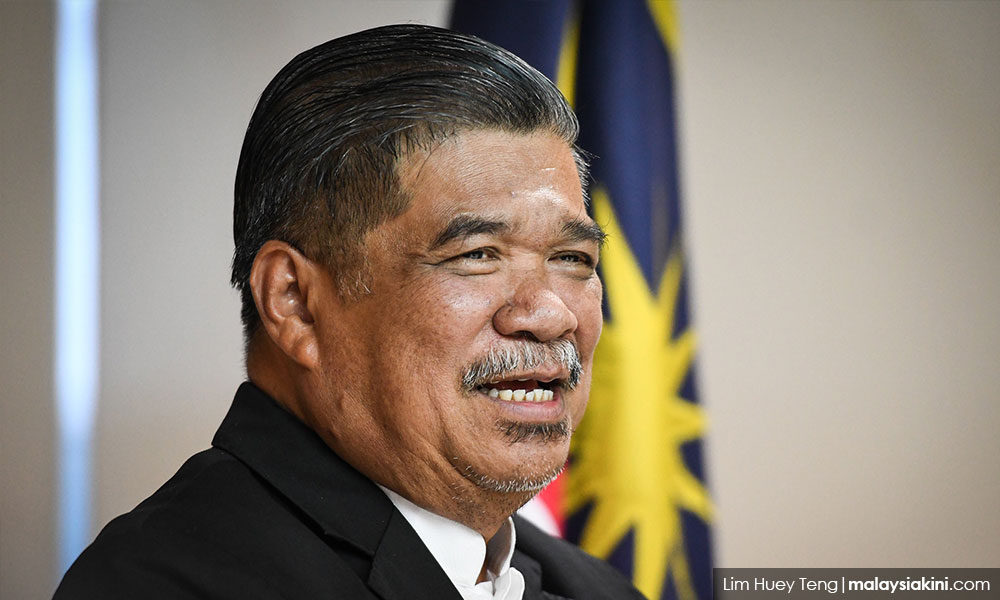PARLIAMENT | The Defence Ministry has moved to outline Malaysia's strategic defence outlook for the next 10 years with the aim of upholding its status as a secure, sovereign and prosperous nation.
This was underscored by Defence Minister Mohamad Sabu when tabling the Defence White Paper in the Dewan Rakyat this morning.
"The vision (for a secure, sovereign and prosperous nation) will be achieved by positioning the country as a maritime nation with continental roots.
"Also, to maximise the country's potential as a bridging linchpin that connects the Asia Pacific region with the Indian Ocean," Mohamad, who is popularly referred to as Mat Sabu, said.
He said the White Paper was drafted partly to involve the people and other stakeholders in the country's security issues and to look into how changes in the security of the surrounding areas could affect Malaysia.
In terms of Malaysia's strategic perspective, Mohamad said the White Paper took into account global uncertainties sparked by the US-China tension and the impact of the two superpowers on other foreign policies.
He also referred to China's activities in the South China Sea, and the encroachment of foreign vessels off the coasts of Sabah and Sarawak.
Beyond China, Mohamad (below) said the Defence Ministry White Paper also took into account the changing geopolitical landscapes across Asia.

"In terms of the economy, East Asia remains the most robust and integrated region. However, from a security perspective, this region has many flashpoints.
"Although there are efforts to repair diplomatic ties in East Asia, in particular off the coasts of Korea, security in the region is still volatile," he said.
Apart from traditional challenges, Mohamad said Malaysia must prepare to face non-conventional threats from domestic and foreign actors, including acts of extremism and terrorism linked to returning fighters with connections to networks in the region.
He added that aside from the conventional role to protect a country's land territory, air space and maritime borders, the White Paper also takes into account digital warfare threats launched in cyberspace.
Other areas covered in it include future capacity-building investments in terms of defence asset procurements, as well as reforms and monitoring mechanisms to improve overall efficiency and confidence in the Armed Forces.
'No wow factor'

Bung Mokhtar Radin (BN-Kinabatangan) (above) later noted that there was no outstanding factor in the 10-year plan.
"I have sat here and listened, and I have read the white paper.
"Do you agree with me that there is no wow factor? It looks just like an ordinary document," said Bung Mokhtar, who interjected during comments by Hishammuddin Hussein (BN Sembrong).
"I fully agree," said Hishammuddin, a former defence minister.
Among others, he said, while the government had listed its "wish list" of defence assets, there were few details on how the assets will be developed or procured.
"After I went through the document and after listening to the minister, I feel disappointed and worried," he said, adding that more details are necessary to instil confidence, not only among the people, but also members of the armed forces.
According to the Defence White Paper document, three bodies - Defence Reform Committee, Defence Ministry Policy Committee and Defence Investment Committee - will be set up to ensure implementation of the reforms from 2020 to 2030.
The Defence Reform Committee, chaired jointly by the Defence Ministry secretary-general and armed forces chief, will act as a facilitator between the Defence Ministry and other relevant government agencies.
The Defence Investment Committee, chaired by the Prime Minister, will ensure that investment decisions are made in the best interest of the nation.
The Defence Ministry Policy Committee, chaired by the Defence Minister, will handle policies pertaining to defence with regard to the nation’s security, sovereignty, and prosperity.
The Government will monitor the implementation of the Defence White Paper through these three new committees.

